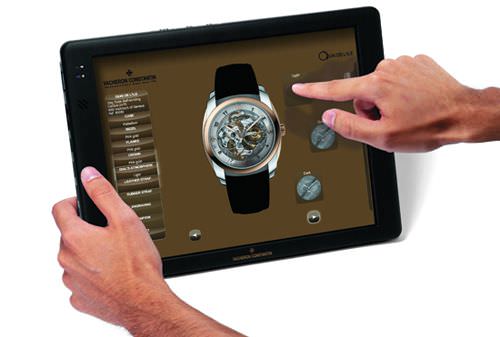
The term ‘fusion’, especially after Jean-Claude Biver made it into a powerful marketing tool for the Hublot brand, is quite in fashion. In the case of Hublot, this early concept combined the ‘against-nature’ union of gold and rubber (or the earth and the sky, as Biver explained) but it later emerged to become a veritable modus operandi, applicable to a whole range of mechanical watches.
Now used on all levels, the concept of ‘fusion’ is truly transforming the world of mechanical timekeeping. Whether it concerns the integration of new materials, the disappearance of boundaries between form and function, the mix of technical and design aspects, new production tools or even profound changes in distribution, ‘fusion’ is the order of the day.
By undergoing ‘fusion’, mechanical watches are changing their appearance, freeing themselves from old constraints, and discovering new horizons.
Beyond the cosmetic or fashion aspects, the utilization of new materials and the application of new surface treatments are allowing watchmakers to finally reach their long-awaited dream of eliminating the need for lubrication. Silicon allows them to go even further by offering the possibilities of new geometries or, as in the case of Girard-Perregaux’s Constant Escapement, to invent new regulating organs that were unthinkable until now. (This topic is discussed at length in this issue.)
‘Fusion’ is also at work on the ‘aesthetic’ level. As the new generation of watch designers have explained to us (see our article in this issue), it is no longer possible to design a single aesthetic ‘wrapping’ or a single ‘chassis’ that holds the movement. Today, artistic inventiveness and creativity must take into account advanced technical considerations because it is now necessary to design the movement and case together. The notion of a dial, for example, is beginning to disappear in favour of a union between the display and gears. Some brands, such as De Bethune (see our article in this issue), are pushing this ‘fusional’ reflection to the extreme. This is demonstrated by how the young brand has organized its manufacturing facilities—component parts of the movement and those of the case are treated in the same ateliers by the same machines.
This ‘fusion’ between technology and design has been made possible thanks to the increasing sophistication of the latest CNC equipment that permits working with previously unobtainable tolerances. New manufacturers are also being born, planned so that they can respond to the exigencies of ‘fusion’. For example, Philippe Merck, CEO of Maurice Lacroix (see our interview in this issue), is calling for an association of all the large independent brands and is even developing his brand’s own production tool. In this vein, Maurice Lacroix is creating a watch that is certainly emblematic of the notion of ‘fusion’—the Mémoire 1. This timepiece is the fruit of a perfect synergy between constructors, designers and watchmakers.
Even in distribution, the concept of ‘fusion’ is at work. Take the Quai de l'Ile by Vacheron Constantin, for example (see article in the previous issue). Doesn’t this custom timepiece merely ‘fusion’ supply and demand?
Through these examples and many others, Europa Star presents this section on the new mechanical watchmaking that is in full ‘fusion’.
Photo: Tactile board by Vacheron Constantin
Source: Europa Star August-September 2008 Magazine Issue





